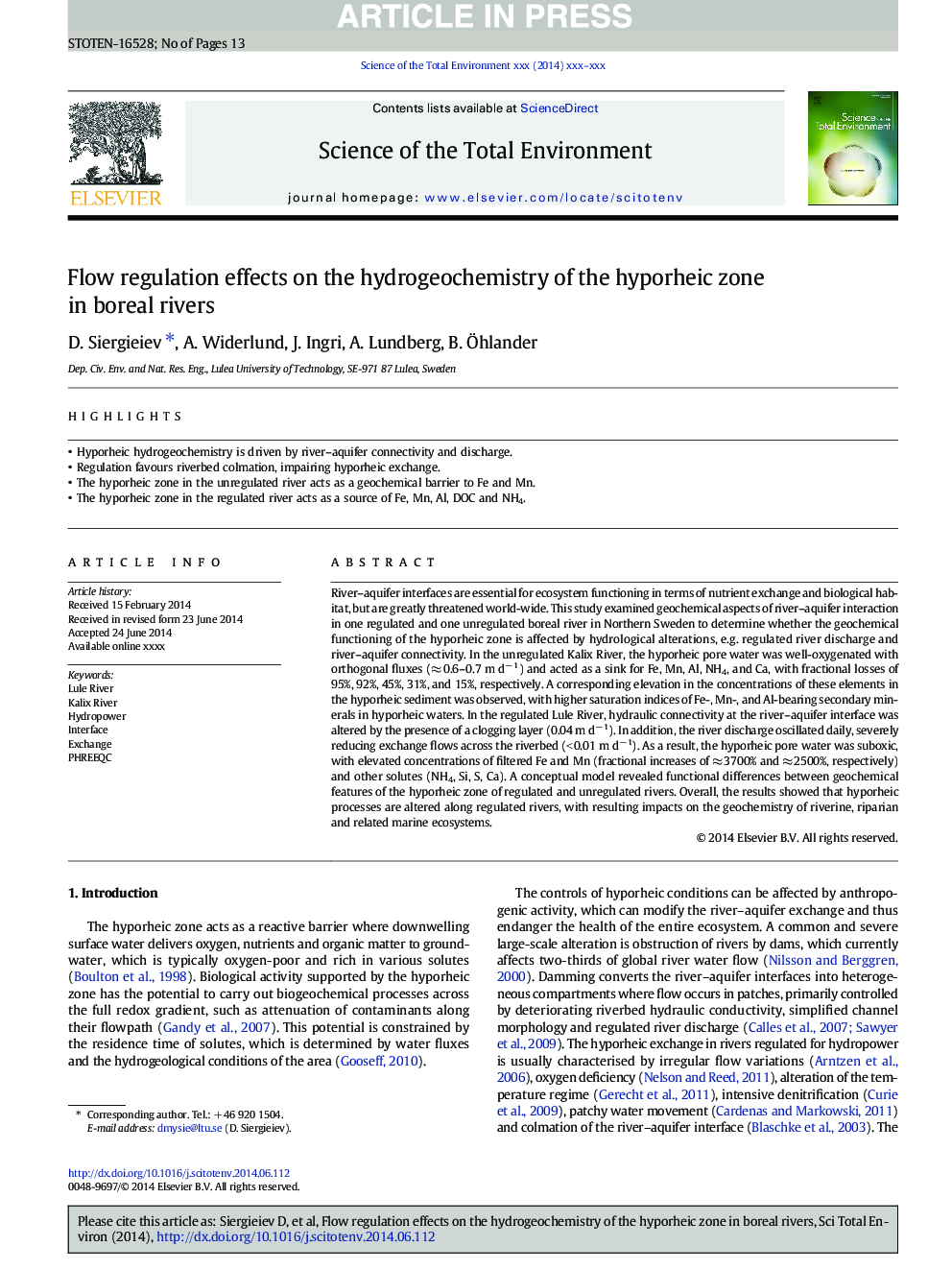| Article ID | Journal | Published Year | Pages | File Type |
|---|---|---|---|---|
| 6328954 | Science of The Total Environment | 2014 | 13 Pages |
Abstract
River-aquifer interfaces are essential for ecosystem functioning in terms of nutrient exchange and biological habitat, but are greatly threatened world-wide. This study examined geochemical aspects of river-aquifer interaction in one regulated and one unregulated boreal river in Northern Sweden to determine whether the geochemical functioning of the hyporheic zone is affected by hydrological alterations, e.g. regulated river discharge and river-aquifer connectivity. In the unregulated Kalix River, the hyporheic pore water was well-oxygenated with orthogonal fluxes (â 0.6-0.7 m dâ 1) and acted as a sink for Fe, Mn, Al, NH4, and Ca, with fractional losses of 95%, 92%, 45%, 31%, and 15%, respectively. A corresponding elevation in the concentrations of these elements in the hyporheic sediment was observed, with higher saturation indices of Fe-, Mn-, and Al-bearing secondary minerals in hyporheic waters. In the regulated Lule River, hydraulic connectivity at the river-aquifer interface was altered by the presence of a clogging layer (0.04 m dâ 1). In addition, the river discharge oscillated daily, severely reducing exchange flows across the riverbed (< 0.01 m dâ 1). As a result, the hyporheic pore water was suboxic, with elevated concentrations of filtered Fe and Mn (fractional increases of â 3700% and â 2500%, respectively) and other solutes (NH4, Si, S, Ca). A conceptual model revealed functional differences between geochemical features of the hyporheic zone of regulated and unregulated rivers. Overall, the results showed that hyporheic processes are altered along regulated rivers, with resulting impacts on the geochemistry of riverine, riparian and related marine ecosystems.
Related Topics
Life Sciences
Environmental Science
Environmental Chemistry
Authors
D. Siergieiev, A. Widerlund, J. Ingri, A. Lundberg, B. Ãhlander,
